Investigating β-adrenergic-induced cardiac hypertrophy through computational approach: classical and non-classical pathways
- PMID: 28674776
- PMCID: PMC10717155
- DOI: 10.1007/s12576-017-0557-5
Investigating β-adrenergic-induced cardiac hypertrophy through computational approach: classical and non-classical pathways
Abstract
The chronic stimulation of β-adrenergic receptors plays a crucial role in cardiac hypertrophy and its progression to heart failure. In β-adrenergic signaling, in addition to the well-established classical pathway, Gs/AC/cAMP/PKA, activation of non-classical pathways such as Gi/PI3K/Akt/GSK3β and Gi/Ras/Raf/MEK/ERK contribute in cardiac hypertrophy. The signaling network of β-adrenergic-induced hypertrophy is very complex and not fully understood. So, we use a computational approach to investigate the dynamic response and contribution of β-adrenergic mediators in cardiac hypertrophy. The proposed computational model provides insights into the effects of β-adrenergic classical and non-classical pathways on the activity of hypertrophic transcription factors CREB and GATA4. The results illustrate that the model captures the dynamics of the main signaling mediators and reproduces the experimental observations well. The results also show that despite the low portion of β2 receptors out of total cardiac β-adrenergic receptors, their contribution in the activation of hypertrophic mediators and regulation of β-adrenergic-induced hypertrophy is noticeable and variations in β1/β2 receptors ratio greatly affect the ISO-induced hypertrophic response. The model results illustrate that GSK3β deactivation after β-adrenergic receptor stimulation has a major influence on CREB and GATA4 activation and consequent cardiac hypertrophy. Also, it is found through sensitivity analysis that PKB (Akt) activation has both pro-hypertrophic and anti-hypertrophic effects in β-adrenergic signaling.
Keywords: CREB transcription factor; GATA4 transcription factor; Gi/PI3K/Akt/GSK3β pathway; Gi/Ras/Raf/MEK/ERK pathway; Non-classical pathways; β-Adrenergic signaling.
Figures
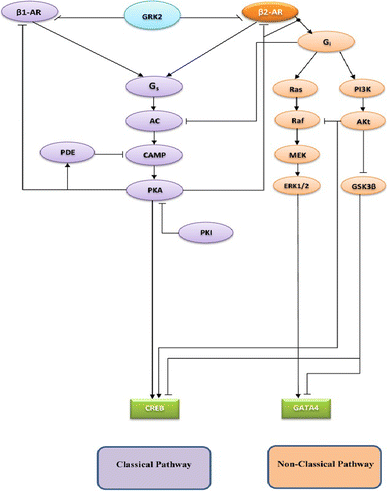
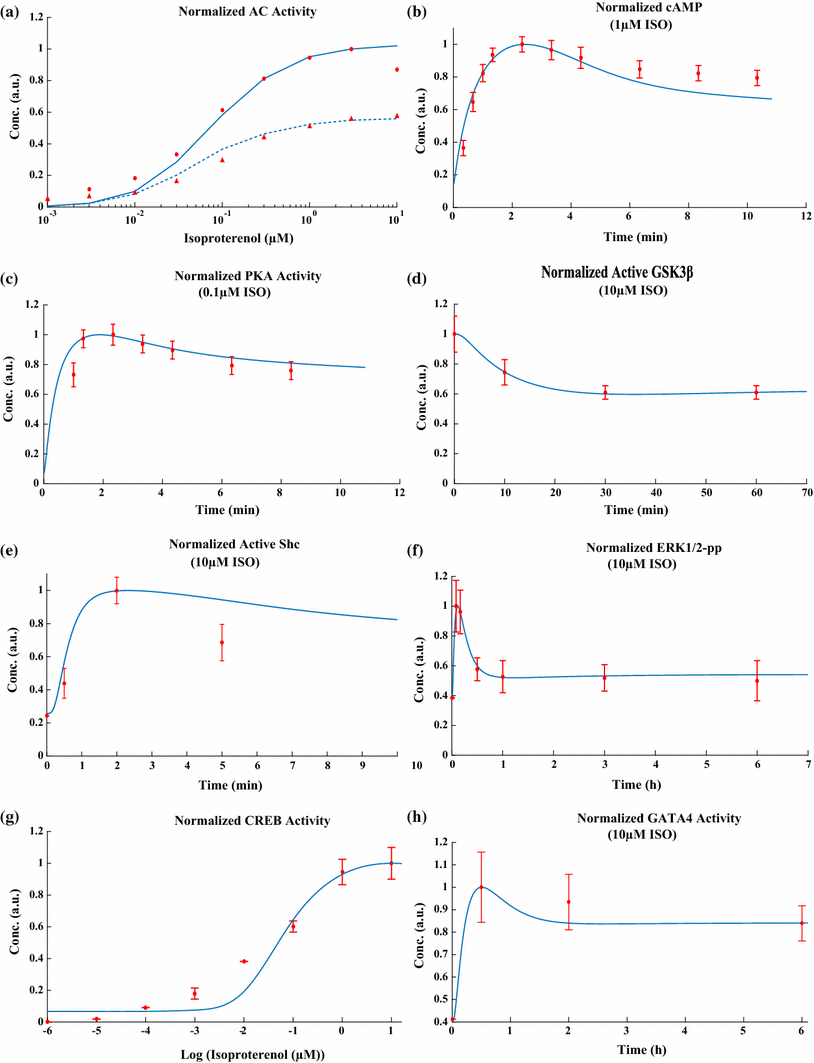
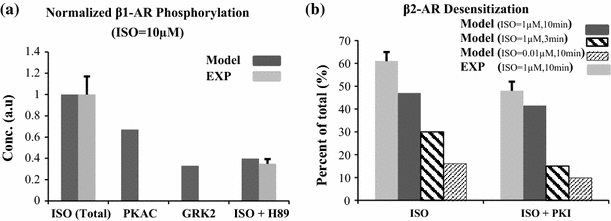
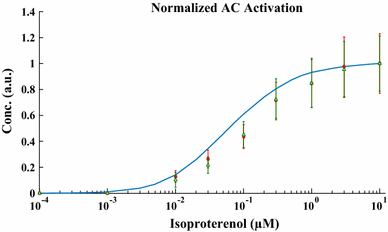

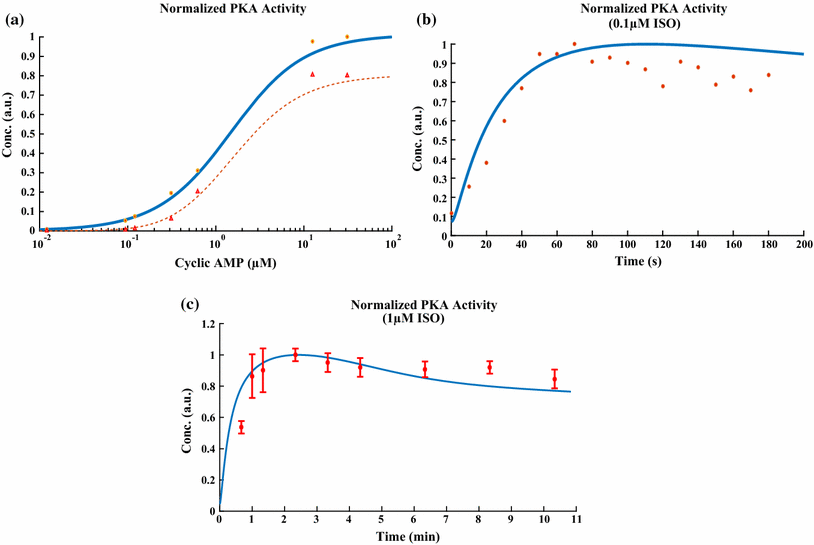
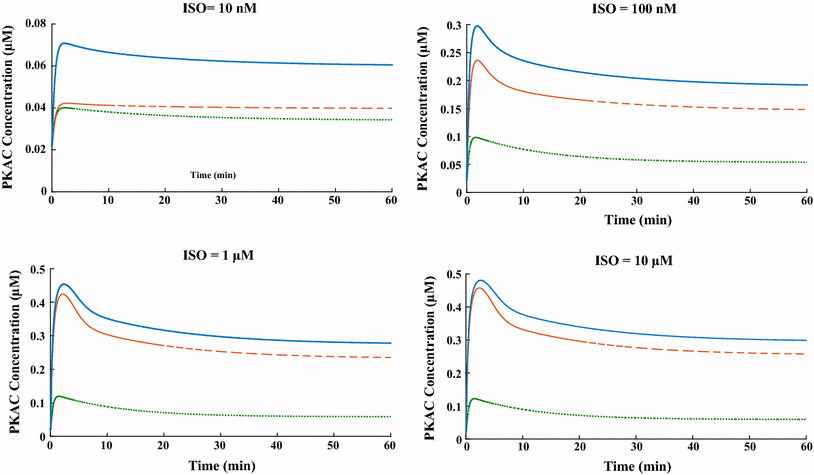
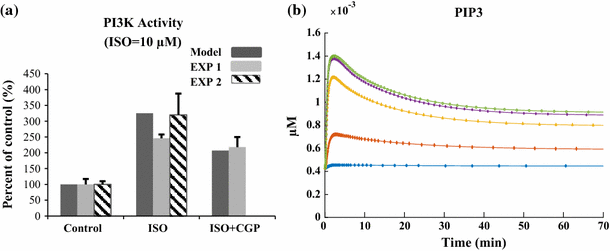
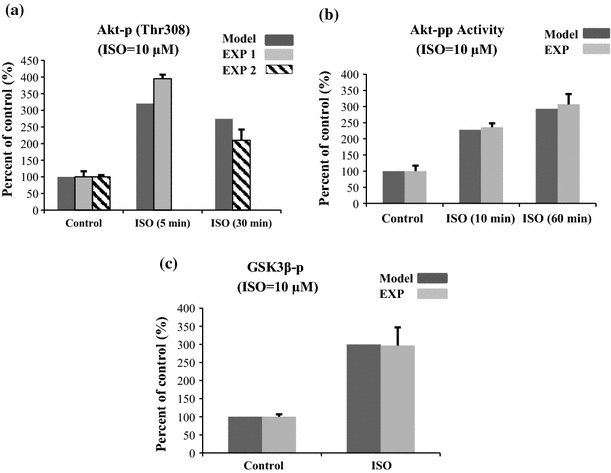
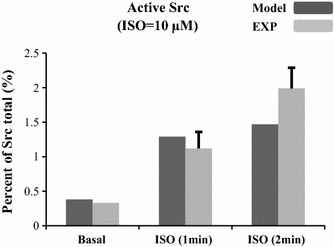
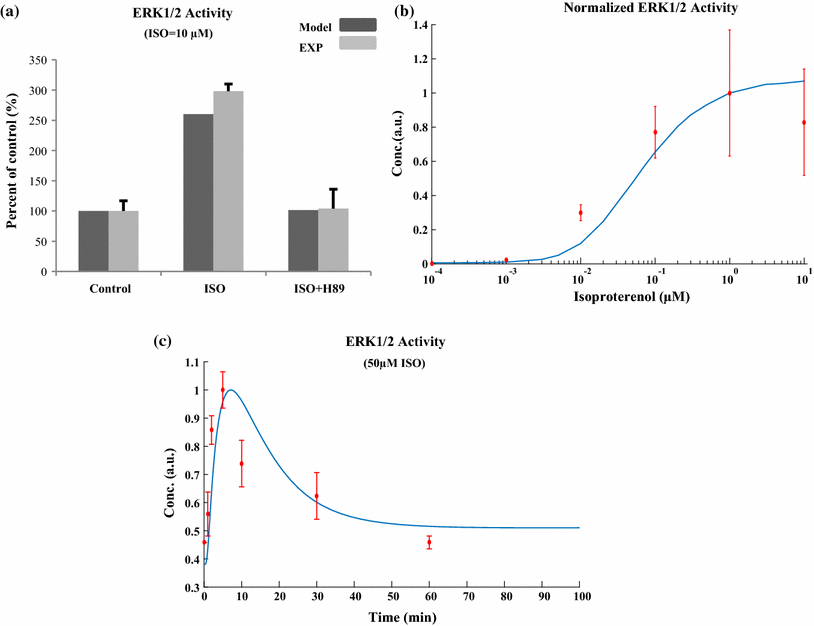
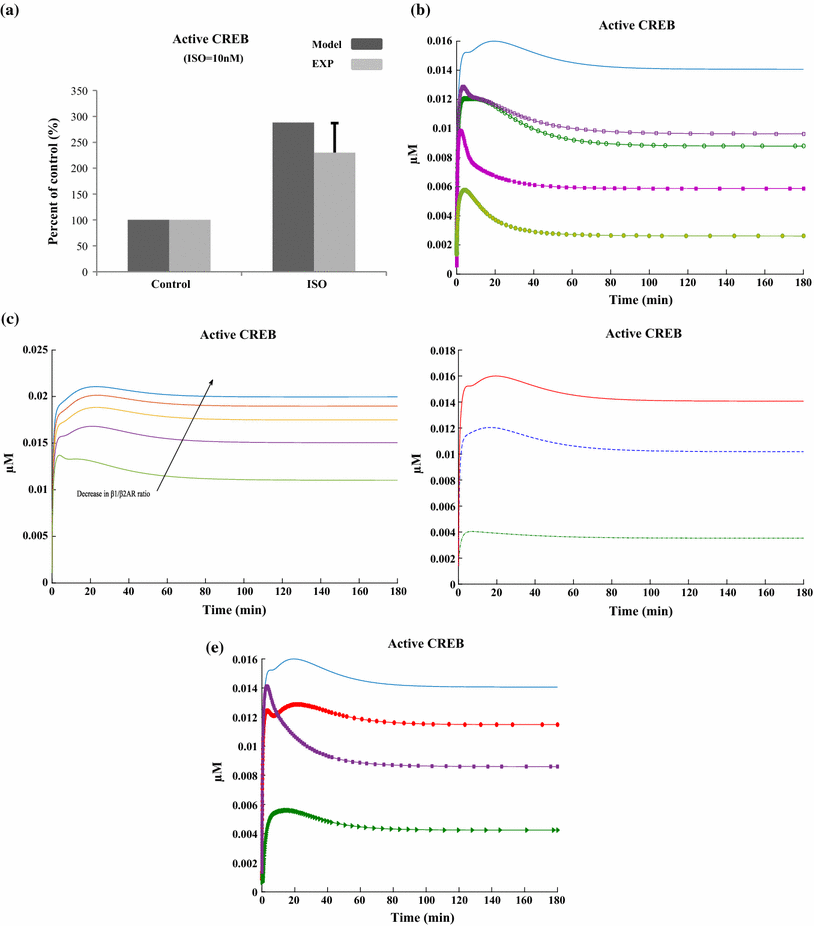


Similar articles
-
Ca2+-dependent calcineurin/NFAT signaling in β-adrenergic-induced cardiac hypertrophy.Gen Physiol Biophys. 2018 Jan;37(1):41-56. doi: 10.4149/gpb_2017022. Gen Physiol Biophys. 2018. PMID: 29424351
-
Reoxygenation after severe hypoxia induces cardiomyocyte hypertrophy in vitro: activation of CREB downstream of GSK3beta.FASEB J. 2004 Jul;18(10):1096-8. doi: 10.1096/fj.03-1054fje. Epub 2004 May 20. FASEB J. 2004. PMID: 15155564
-
Interplay between the E2F pathway and β-adrenergic signaling in the pathological hypertrophic response of myocardium.J Mol Cell Cardiol. 2015 Jul;84:179-90. doi: 10.1016/j.yjmcc.2015.04.026. Epub 2015 May 2. J Mol Cell Cardiol. 2015. PMID: 25944088
-
Role of Beta-adrenergic Receptors and Sirtuin Signaling in the Heart During Aging, Heart Failure, and Adaptation to Stress.Cell Mol Neurobiol. 2018 Jan;38(1):109-120. doi: 10.1007/s10571-017-0557-2. Epub 2017 Oct 24. Cell Mol Neurobiol. 2018. PMID: 29063982 Free PMC article. Review.
-
Molecular basis of cardiac hypertrophy.Z Kardiol. 2000 Jan;89(1):1-6. doi: 10.1007/s003920050001. Z Kardiol. 2000. PMID: 10663910 Review.
Cited by
-
Calcium Sensing Receptor-Related Pathway Contributes to Cardiac Injury and the Mechanism of Astragaloside IV on Cardioprotection.Front Pharmacol. 2018 Oct 11;9:1163. doi: 10.3389/fphar.2018.01163. eCollection 2018. Front Pharmacol. 2018. PMID: 30364197 Free PMC article.
-
Clinical-pathological correlations of BAV and the attendant thoracic aortopathies. Part 2: Pluridisciplinary perspective on their genetic and molecular origins.J Mol Cell Cardiol. 2019 Aug;133:233-246. doi: 10.1016/j.yjmcc.2019.05.022. Epub 2019 Jun 6. J Mol Cell Cardiol. 2019. PMID: 31175858 Free PMC article. Review.
-
Shexiang Baoxin Pills Could Alleviate Isoproterenol-Induced Heart Failure Probably through its Inhibition of CaV1.2 Calcium Channel Currents.Biochem Res Int. 2022 Nov 9;2022:5498023. doi: 10.1155/2022/5498023. eCollection 2022. Biochem Res Int. 2022. PMID: 36405392 Free PMC article.
-
Context-specific network modeling identifies new crosstalk in β-adrenergic cardiac hypertrophy.PLoS Comput Biol. 2020 Dec 18;16(12):e1008490. doi: 10.1371/journal.pcbi.1008490. eCollection 2020 Dec. PLoS Comput Biol. 2020. PMID: 33338038 Free PMC article.
-
Regulation of cardiac function by cAMP nanodomains.Biosci Rep. 2023 Feb 27;43(2):BSR20220953. doi: 10.1042/BSR20220953. Biosci Rep. 2023. PMID: 36749130 Free PMC article. Review.
References
MeSH terms
Substances
LinkOut - more resources
Full Text Sources
Other Literature Sources
Research Materials
Miscellaneous

